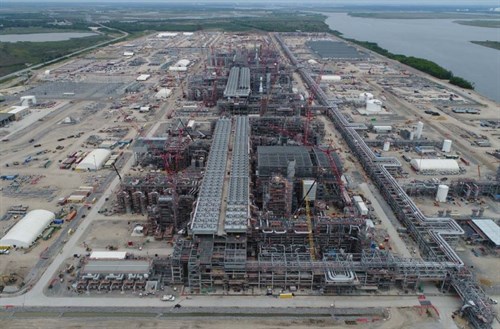McDermott, Chiyoda introduce feed gas to Train 2 at Cameron LNG
HOUSTON, /PRNewswire/ -- McDermott International, Inc. and its joint venture partner, Chiyoda International Corporation, a U.S.-based wholly-owned subsidiary of Chiyoda Corporation, Japan, announced that Train 2 of the Cameron project, located in Hackberry, La., has reached the final commissioning stage. This includes the introduction of pipeline feed gas into Train 2 of the liquefaction export facility, the precursor for the production of liquefied natural gas (LNG). This achievement is yet another significant milestone during 2019 and the first for Train 2.
 |
McDermott announced introduction of feed gas to Train 1 on April 15, 2019, which was followed by first liquid on May 14 and first cargo from Train 1 on May 31. On August 19, Cameron LNG announced that Train 1 began commercial operation, following its substantial completion.
"Congratulations to the entire Cameron LNG project team who continues to make strides on this project and remains focused on providing stellar project delivery as we reach another notable milestone," said Mark Coscio, McDermott's Senior Vice President for North, Central and South America.
McDermott and Chiyoda have provided the engineering, procurement and construction for the Cameron LNG project since the project's initial award in 2014. The project includes three liquefaction trains with a projected export of 12 million tonnes per annum of LNG, or approximately 1.7 billion cubic feet per day.
Cameron LNG is jointly owned by affiliates of Sempra LNG LLC, Total, Mitsui & Co. Ltd. and Japan LNG Investment, LLC, a company jointly owned by Mitsubishi Corporation and Nippon Yusen Kabushiki Kaisha (NYK).

- ADNOC Gas awards $2.1 B in contracts to enhance LNG supply infrastructure
- U.S. Department of the Treasury releases final rules for clean hydrogen production tax credit
- Tecnimont to build waste-to-biogas plant to fuel local kitchens in India
- Indonesia regulator confirms disruption at bp's Tangguh LNG project
- Topsoe, Aramco sign JDA to advance low-carbon hydrogen solutions using eREACT™



Comments